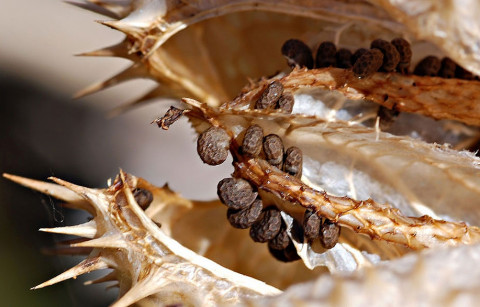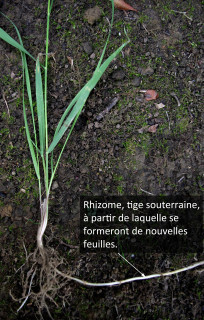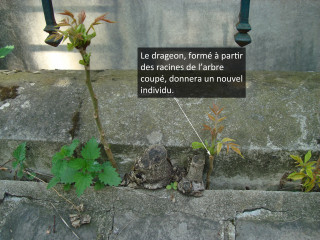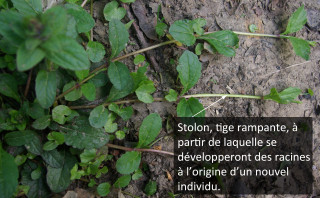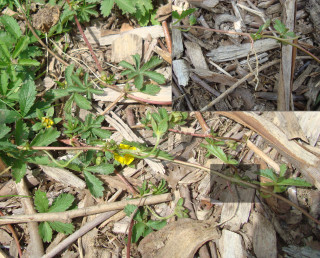Populating the urban environment
In order to bloom on our streets, plants must be able to disperse. Seeds are an effective means, but not the only one!
The seed, a plant in kit form
Seeds are formed in the fruit as a result of fertilisation of the female reproductive cells (ovules contained in the ovary) by the male reproductive cells (contained in the pollen grains) which takes place in the flower. The seed contains an embryo that will develop into a new plant when conditions are right. This development is called germination. Seeds can wait for months, years, centuries, and exceptionally even a millennium! Hidden in the smallest corners, they wait for favourable conditions to germinate, so that they do not germinate in the middle of winter.
Travelling seeds
In order to colonise the city, the seeds produced by flowering plants or the fruits containing them are dispersed. This dispersal is done in different ways. Wind, water, birds, insects or other animals can carry the seeds. For example, animals will throw them away in their excrement after eating the fruit or carry them after they have stuck to their bodies. But the city is a source of very special vectors such as shoe soles, car tyres, or the bottom of your trousers!
Rapid multiplication for good or ill
The Ailante was introduced from China to Europe by Chéron d'Incarville in the 1740s and to the USA in 1784. It was one of the first trees imported to the West at a time when chinoiseries dominated European art and was initially considered a beautiful subject for gardens. However, enthusiasm soon waned as gardeners became familiar with its suckering and multiplying tendencies and its foul smell. Despite this, it was widely used as a street tree well into the 19th century. Outside Europe and the USA, the species has been established in many other regions beyond its native range.
Varied dispersal strategies
Mustard flavoured seeds
To disperse its seeds, a common reseda, Ochradenus baccatus, is said to take advantage of the pronounced mustard taste that its fruits release when crunched by animals. Israeli scientists have observed a small rodent, Acomys cahirinus, spitting out the seeds of this plant from the Negev desert. See the article.
Dispersing without seeds
Some plants can populate the surrounding environment from person to person by means of organs which, by separating from the original plant, enable them to form new individuals. This type of reproduction is called vegetative propagation, as it does not involve reproductive cells.
Among urban wild plants, the most common organs of vegetative propagation are :
- underground stems or rhizomes,
- suckers,
- stolons.
For example, the Ailante is a plant that propagates very quickly by seeds, but above all by new shoots called suckers, which form from the roots even after the tree has been cut down. It can withstand ozone, exhaust fumes, cement dust and other human pollution!
Resources to address the spread of seeds
- A game to assess the chances of a seed growing in the city: download the game.
- Un exercice pour déterminer le mode de dissémination de quelques graines : download the exercise.
